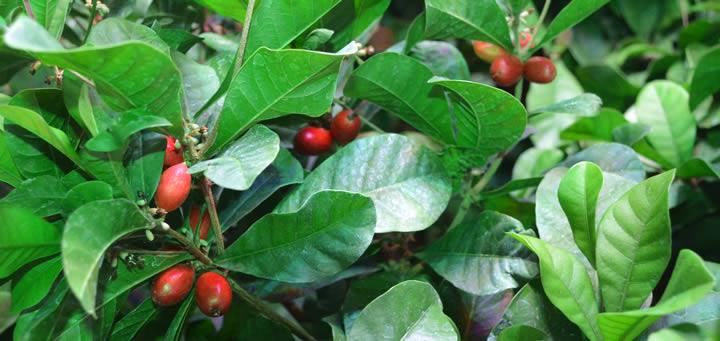Miracle Fruit

Synsepalum dulcificum
The berries from this Miracle Fruit plant temporarily alter the sense of taste. After eating a fruit, anything sour or acidic such as lemons and limes tastes incredibly sweet.
Scientific classification: |
|
| Kingdom: | Plantae |
| Division: | Angiosperms |
| Class: | Asterids |
| Order: | Ericales |
| Family: | Sapotaceae |
| Genus: | Synsepalum |
| Species: | dulcificum |

Natural habitat and growing conditions:
A large bush or small tree native to Ghana, Africa, miracle fruit is adapted to ultra-tropical rainforest environments, though will survive in sub-tropical locations. It requires acidic soil (pH 4.5-5.5), high humidity, regular water, and bright light to perform well.Notes of interest:
- The berries contain a glycoprotein called miraculin which binds to the taste receptors on the tongue, blocking sour taste receptors and triggering sweet receptors when acidic (sour) food is eaten. The miraculin breaks down quickly when exposed to heat.
- Once picked, miracle fruit only last for a few days before spoiling, which is why you don't see them in supermarkets.
- Lobbying from the sugar industry in the 1970's led the FDA to classify this berry as a "food additive" even though it is completely natural with no known adverse reactions.
- Plants usually take 5 years from seed to start bearing regular crops of fruit.






